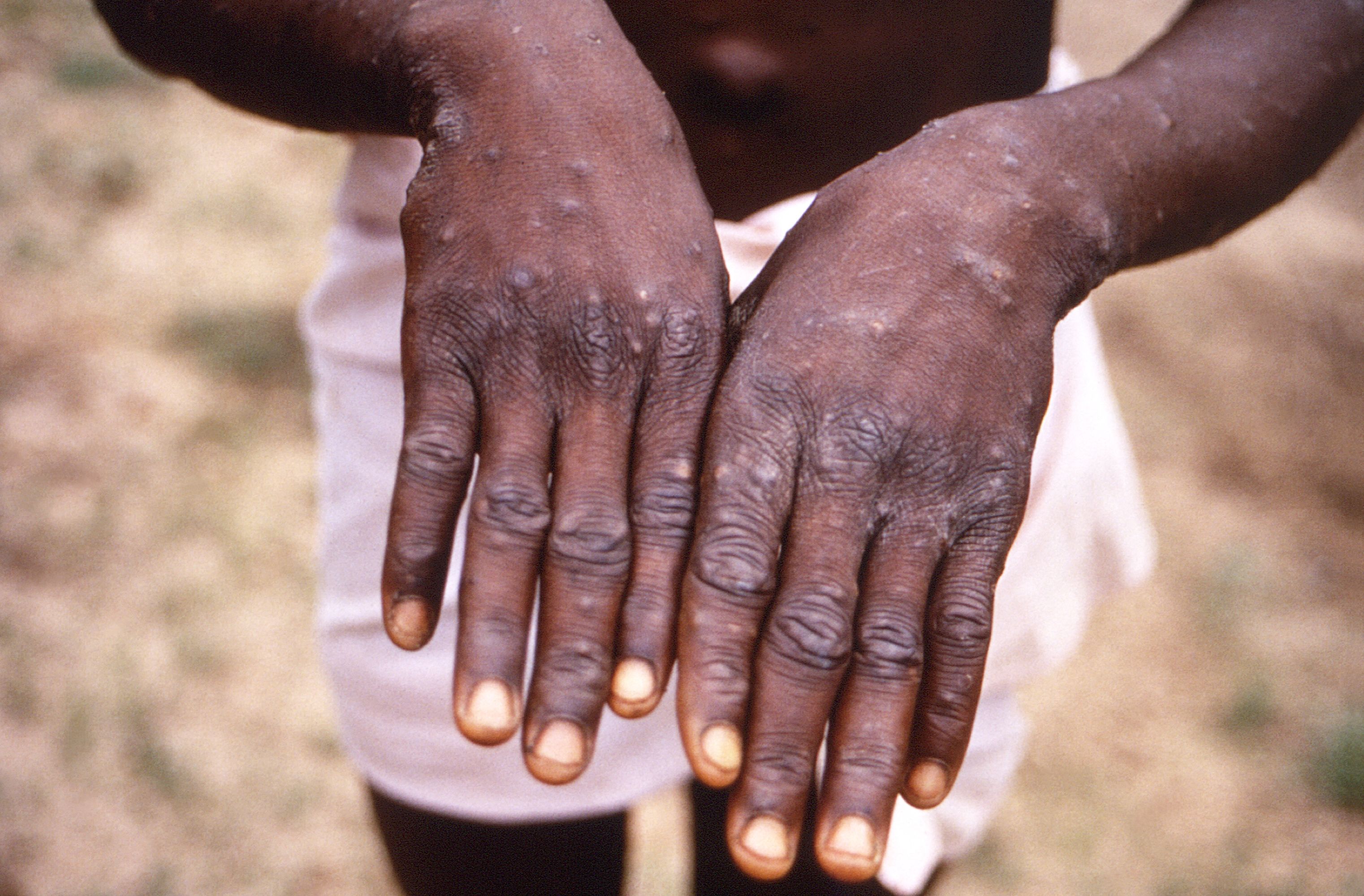This is not the monkeypox that doctors thought they knew
Sign up now: Get ST's newsletters delivered to your inbox

It was still uncertain whether people without symptoms could spread the virus.
PHOTO: AFP
Follow topic:
NEW YORK (NYTIMES) - Early in the monkeypox outbreak, a man in his 20s arrived at an emergency department in Northern California, tiny blisters on his lips, hands and back. Within 12 hours, doctors diagnosed him with monkeypox.
That's where their certainty ended. The patient did not have fever, aches, weakness, pain or other symptoms typical of the disease. He did not know when or how he had become infected.
He had not had sexual contact with anyone for months, he said, and had not touched - as far as he knew - anyone with pox, as the lesions are called, or other symptoms.
At the onset of the outbreak, scientists thought they knew when and how the monkeypox virus was spread, what the disease looked like and who was most vulnerable. The 47,000 cases identified worldwide have upended many of those expectations.
Monkeypox patients have turned up with what looked like mosquito bites, pimples or ingrown hairs, not the large pustules usually associated with the infection. Some did not even have visible lesions but felt excruciating pain when swallowing, urinating or emptying their bowels.
Some had headaches or depression, confusion and seizures. Others had severe eye infections or inflammation of the heart muscle. At least three of the six deaths reported so far were linked to encephalitis, an inflammation of the brain.
"We really are seeing a very, very wide range of presentation," said Dr Boghuma Titanji, an infectious disease physician at a clinic in Atlanta that serves people living with HIV.
Scientists now know that the monkeypox virus lurks in saliva, semen and other bodily fluids, sometimes for weeks after recovery. The virus has always been known to spread through close contact, but many researchers suspect the infection may also be transmitted through sex itself.
The California patient had virus in his throat, but no respiratory symptoms, and in his rectum, but without pain or pox.
The case underscores other research suggesting that the virus may be spread even by people with atypical or asymptomatic infections, said Dr Abraar Karan, who diagnosed the patient and published a recent case report.
In another study, also published this month, anal swabs of 200 men without symptoms turned up 13 who were positive for monkeypox. Only two of them later developed symptoms.
"It's no longer correct to say it can't be transmitted asymptomatically," said Dr Chloe Orkin, an infectious disease physician at Queen Mary University of London. "I think that it means that our working model of how it's spread is incorrect."

Early in the outbreak, the Centres for Disease Control and Prevention said that "people who do not have monkeypox symptoms cannot spread the virus to others".
The agency on July 29 changed that phrasing to say that "scientists are still researching" the possibility of asymptomatic transmission.
In a statement to The New York Times, an agency spokesman acknowledged recent evidence that asymptomatic cases were possible but said that it was still uncertain whether people without symptoms could spread the virus and that more research was needed.
When the first few dozen cases of monkeypox emerged in Europe, spreading of the virus through sexual contact and genital lesions came as a surprise to many scientists. But it shouldn't have.
Nigerian researchers reported a similar pattern in 2017, when they documented 228 cases, many of them young men with genital ulcers. (The patients identified as heterosexual in a subsequent study, but Nigeria criminalises same-sex behaviour.)
Those cases were the first reported in Nigeria in 40 years, and the World Health Organisation (WHO) helped the country "mount the local response, with the goal to control spread", said Ms Fadela Chaib, a WHO spokesman.
But the unusual symptoms of the patients went unnoticed. "If what is happening in Europe and the global North had not happened, I don't think that paper would be discussed," said Dr Dimie Ogoina, who led a study describing the cases.
"We have this disease that's more than 50 years old, and there's a lot of things we still don't know - and that's because the condition has been largely restricted to Africa," he said.

In late May, Dr Orkin contacted several international colleagues to put together what turned out to be the largest study of monkeypox. Hundreds of physicians from 16 countries eventually contributed information about the cases they were seeing.
They changed the reporting forms as the disease came into sharper focus, adding the possibility of a single pox, lesions in the throat or rectum, and medical complications - features that were "not included in international case definitions of monkeypox", Dr Orkin said.
The resulting analysis of 528 patients was published in The New England Journal of Medicine on July 21. A few days later, Dr Orkin alerted several national health agencies, knowing the findings should alter the case definitions that doctors consult when diagnosing patients.

Britain's Health Security Agency and the European Centres for Disease Control both replied the same day. Britain added some of the new symptoms to its monkeypox case definition three days later.
For patients, outdated case definitions and guidance can have serious implications.
Mr Cameron French, 30, was exposed to the virus on July 6. Two weeks later, he developed a sore throat, head and body aches, painful urination and three bumps - on his face, a thigh and an elbow.
Yet, on his first visit to a clinic, on July 25, his doctor did not connect the symptoms. She told him the bump on his thigh was an ingrown hair and tested him for a urinary tract infection.
He went back three days later. This time, the doctor agreed to test him for monkeypox. After he tested positive, he had to push once again, this time to get the antiviral tecovirimat.
Mr French said he was most frustrated by the lack of guidance on how to distinguish a potential new pox from a pimple so he could end his month-long isolation. "That's been a big ambiguous question mark," he said. "That's been hard."

